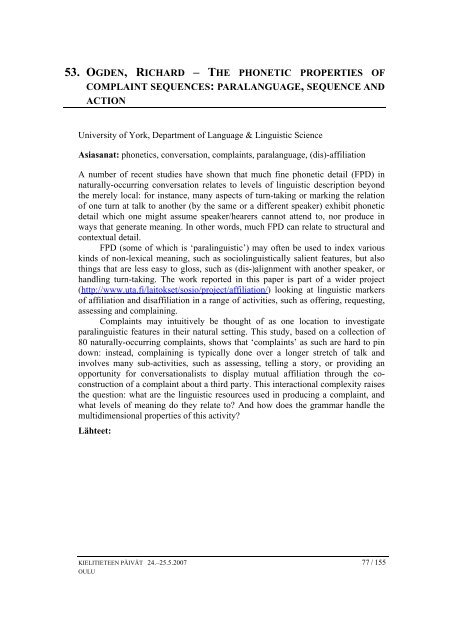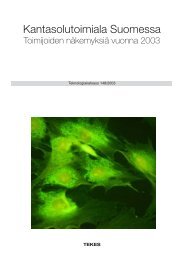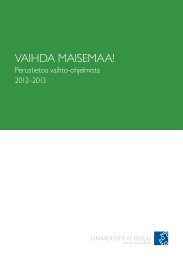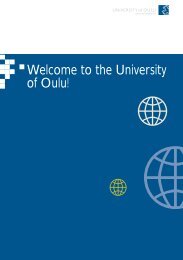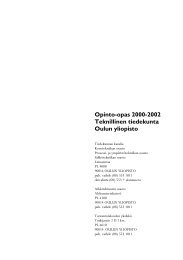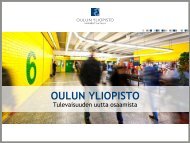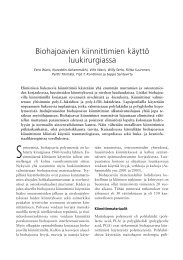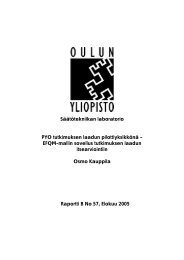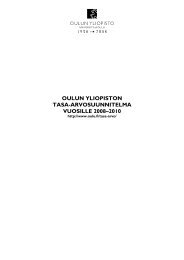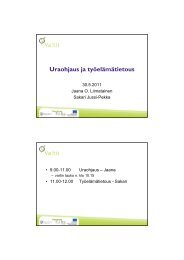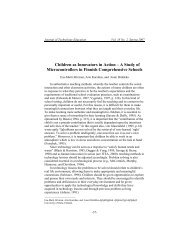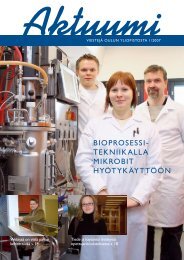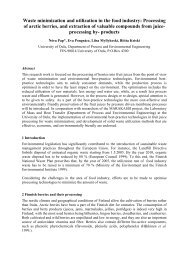Abstraktit - Oulu
Abstraktit - Oulu
Abstraktit - Oulu
Create successful ePaper yourself
Turn your PDF publications into a flip-book with our unique Google optimized e-Paper software.
53. OGDEN, RICHARD – THE PHONETIC PROPERTIES OF<br />
COMPLAINT SEQUENCES: PARALANGUAGE, SEQUENCE AND<br />
ACTION<br />
University of York, Department of Language & Linguistic Science<br />
Asiasanat: phonetics, conversation, complaints, paralanguage, (dis)-affiliation<br />
A number of recent studies have shown that much fine phonetic detail (FPD) in<br />
naturally-occurring conversation relates to levels of linguistic description beyond<br />
the merely local: for instance, many aspects of turn-taking or marking the relation<br />
of one turn at talk to another (by the same or a different speaker) exhibit phonetic<br />
detail which one might assume speaker/hearers cannot attend to, nor produce in<br />
ways that generate meaning. In other words, much FPD can relate to structural and<br />
contextual detail.<br />
FPD (some of which is ‘paralinguistic’) may often be used to index various<br />
kinds of non-lexical meaning, such as sociolinguistically salient features, but also<br />
things that are less easy to gloss, such as (dis-)alignment with another speaker, or<br />
handling turn-taking. The work reported in this paper is part of a wider project<br />
(http://www.uta.fi/laitokset/sosio/project/affiliation/) looking at linguistic markers<br />
of affiliation and disaffiliation in a range of activities, such as offering, requesting,<br />
assessing and complaining.<br />
Complaints may intuitively be thought of as one location to investigate<br />
paralinguistic features in their natural setting. This study, based on a collection of<br />
80 naturally-occurring complaints, shows that ‘complaints’ as such are hard to pin<br />
down: instead, complaining is typically done over a longer stretch of talk and<br />
involves many sub-activities, such as assessing, telling a story, or providing an<br />
opportunity for conversationalists to display mutual affiliation through the coconstruction<br />
of a complaint about a third party. This interactional complexity raises<br />
the question: what are the linguistic resources used in producing a complaint, and<br />
what levels of meaning do they relate to? And how does the grammar handle the<br />
multidimensional properties of this activity?<br />
Lähteet:<br />
KIELITIETEEN PÄIVÄT 24.–25.5.2007 77 / 155<br />
OULU


